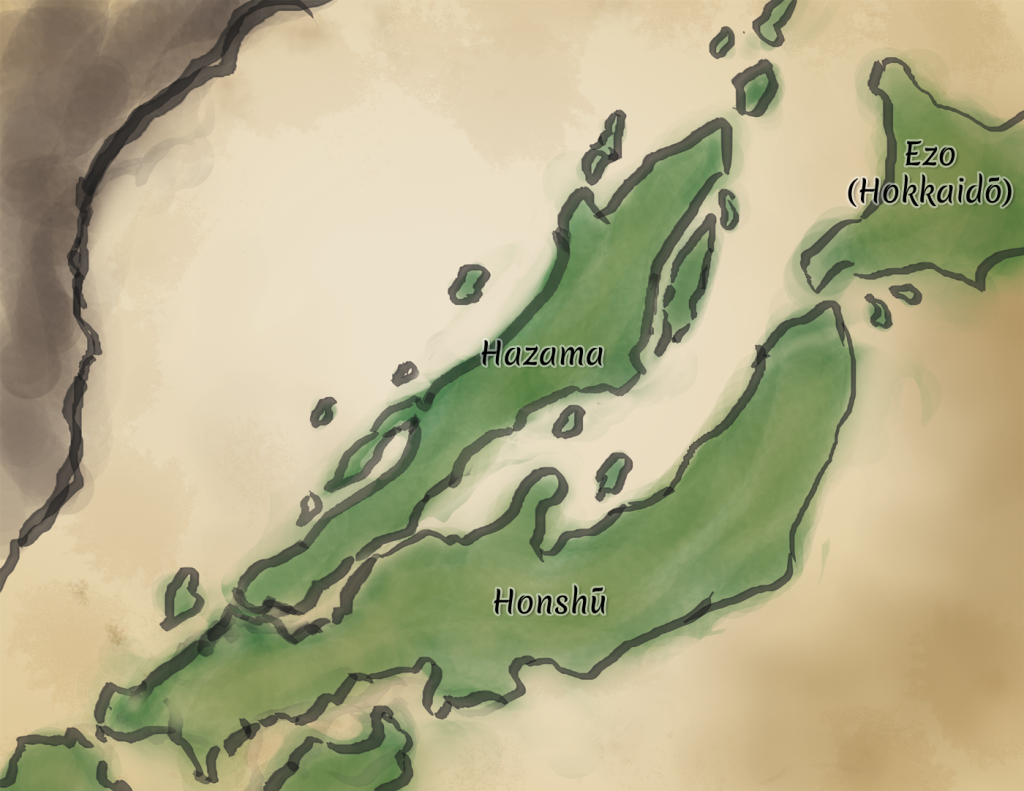The world of Mysteries of the Yokai sets itself apart from the real world in many ways. Most notable of these differences is the existence of magic and the supernatural. Mysteries of the Yokai represents Japan in a way that’s informed by history, folklore, and mythological tales. But there are important changes that we have written into the canonical setting. This series of posts is meant to highlight and discuss the reasonings for these changes, giving me a platform to also discuss the fascinating tidbits of Japanese culture and history.
Welcome to the first article in the Mysterious Lore series where we discuss differences between the world of Mysteries of the Yokai and the real world. Today I’m going to talk about one such difference you might have noticed from looking at our map, the existence of new islands. Most notable of these is Hazama, the largest of the fictional islands. If Hazama existed in the real world, it would be the second largest island in the Japanese Archipelago. It is the home of the Emperor’s throne in the city of Miwa and the setting for many of the adventures we’ll write for our players.
The name Hazama is spelled using the kanji, 羽 (wings, feathers) and 間 (interval, space). The shape of the Japanese archipelago in ancient times has been likened to that of a dragonfly. If Japan is a dragonfly, then the island of Hazama would form its wings. As such, dragonflies, wings, and feathers are a common motif in the names of places on the island. The dragonfly is a recurring symbol in Mysteries of the Yokai and it happens to be one that has deep meaning in Japan too. The dragonfly is an auspicious symbol, carved onto protection charms and on samurai armor. All its meanings and appearances are too many to be discussed in this post, I’ll make sure to go into more detail at another time.

